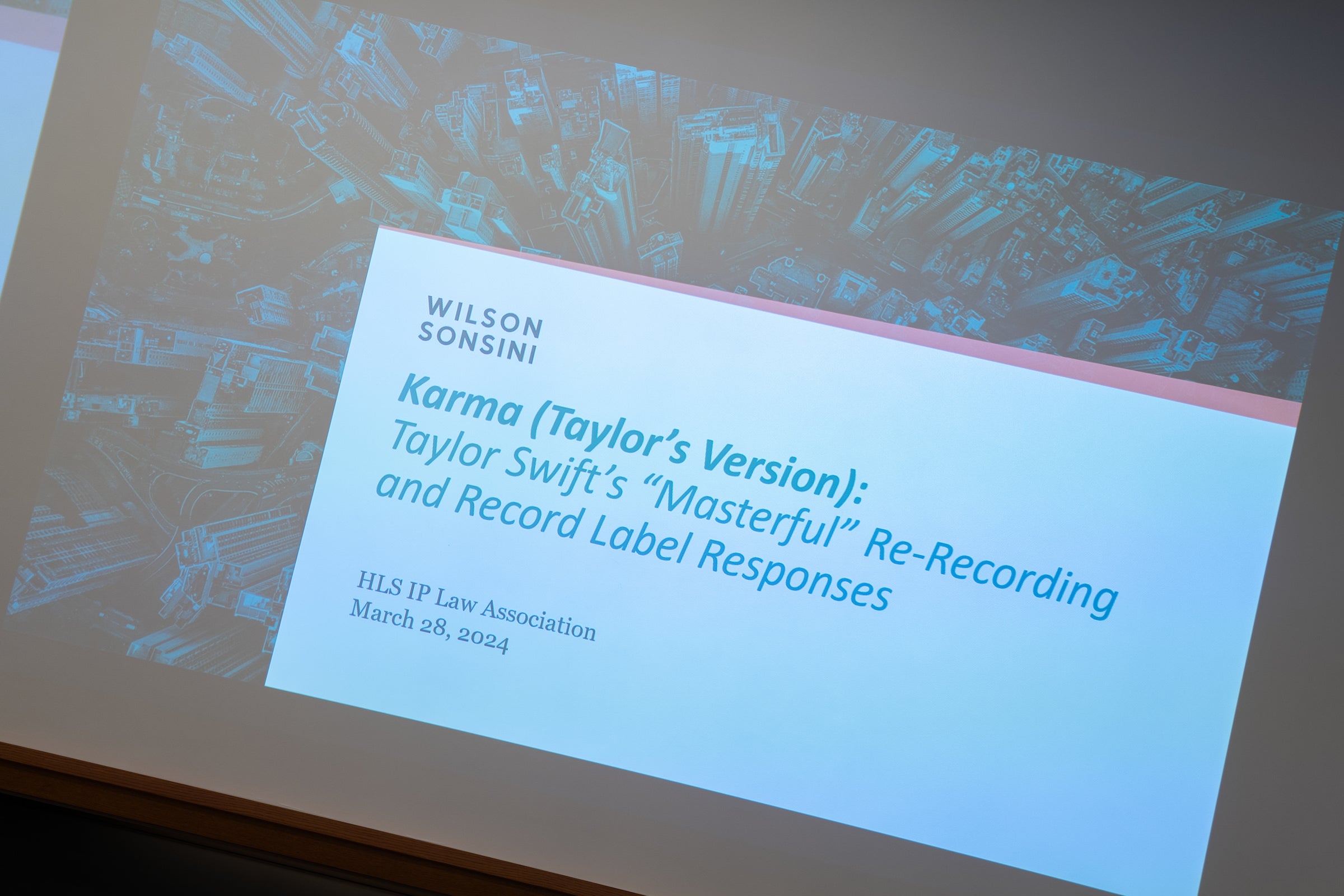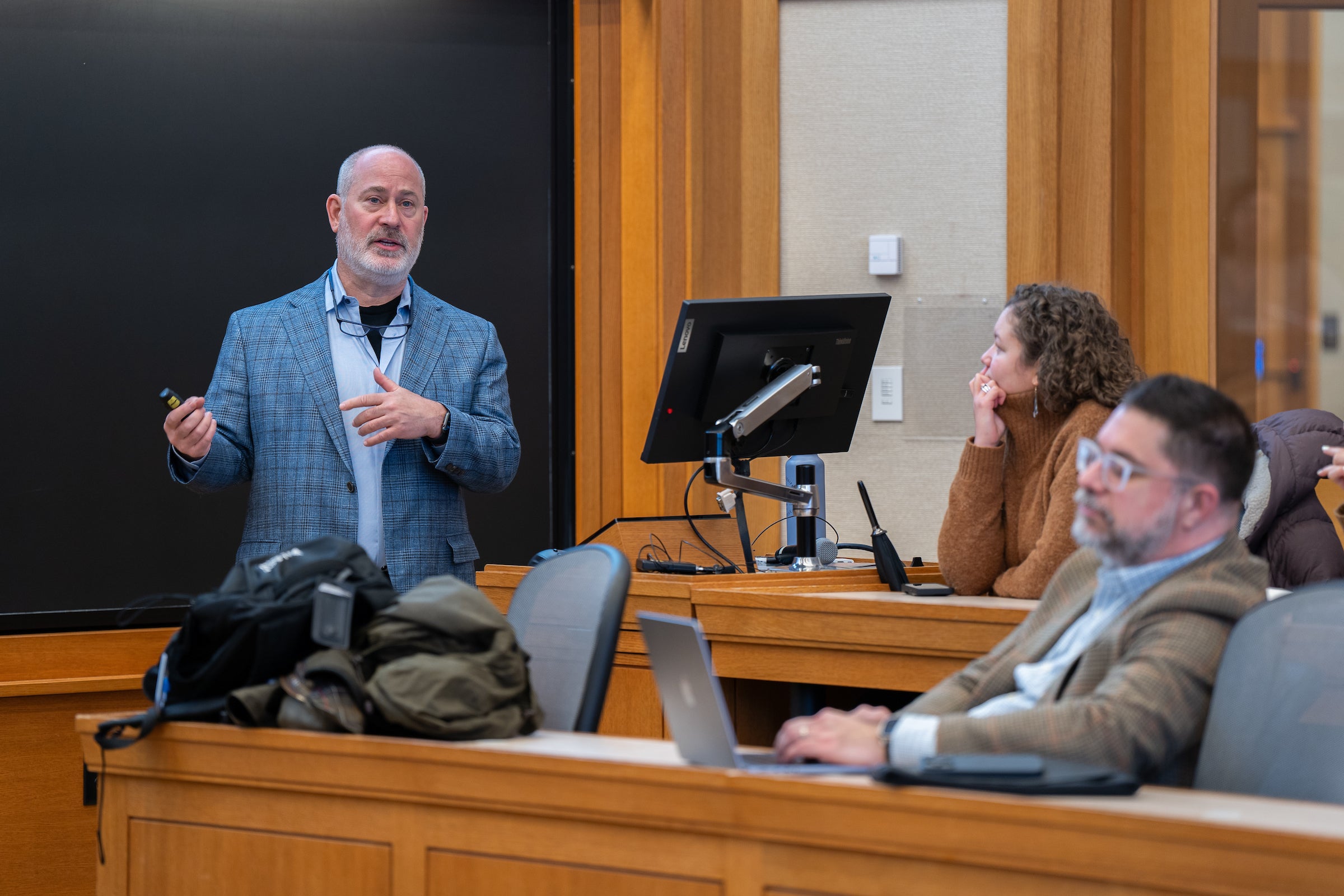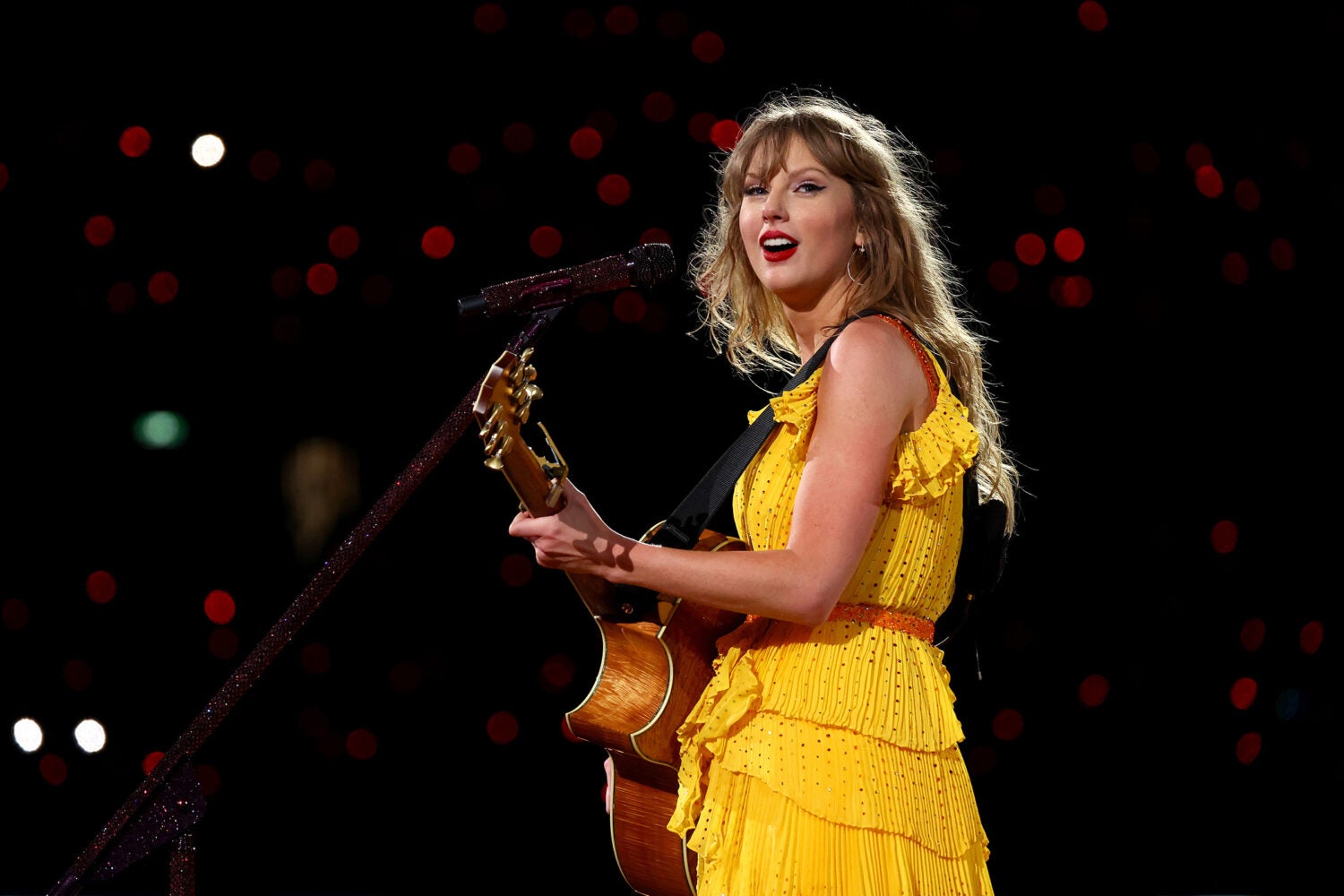When Taylor Swift began re-recording her old albums and releasing the new, improved “Taylor’s Version,” she did more than delight a nation of Swifties. She also opened significant questions about the role of intellectual property in contract law, and possibly tipped the balance toward artists.
According to Gary R. Greenstein, a technology transactions partner at Wilson Sonsini, the Swift affair is one of many that makes these times especially interesting for copyright law. Greenstein’s current practice focuses on intellectual property, licensing, and commercial transactions, with specialized expertise in the digital exploitation of intellectual property. He appeared at Harvard Law School on March 28 for a lunchtime talk, which was presented and introduced by Chris Bavitz, the WilmerHale Clinical Professor of Law and managing director of the law school’s Cyberlaw Clinic. “I have been doing this for 28 years now and there is never a dull moment,” Greenstein said.
Greenstein placed the Swift story in the larger context of music copyrights. In music, he explained, there are always two copyrights. The first is for the musical work itself, and this is usually controlled by the composer/songwriter, or by a publishing company acting on their behalf. The second is the “master,” the recorded performance of the work, and this is usually controlled by the label.
Whenever a song is played in public, one or both of these entities gets paid. In many cases, there are multiple copyright holders — the Bruno Mars hit “Uptown Funk” has six authors — or multiple recordings of the same songs (he noted that Bob Dylan’s “All Along the Watchtower” has hundreds). “From a licensing point of view, this can be a nightmare,” Greenstein said.
In 2005, a teenaged Taylor Swift signed on to the Big Machine record label and became a global superstar by the time she left the company in 2018. By that time, she’d recorded six albums for the label, all multimillion sellers.
Soon afterward, Big Machine was purchased by her longtime business nemesis — “to Swifties, the hated Scooter Braun,” as Greenstein called him. (The two had longstanding bad blood, and Swift had referred to Braun as a bully and a manipulator). Braun in turn sold Big Machine, including the Swift albums it owned, to another company, Shamrock Holdings, for $420 million. Greenstein said that he was involved in the Big Machine deal but was not free to share details.
Rather than buy into this agreement, Swift announced she would remake the albums. Under her new record deal with Universal Music Group, she’d now own whatever masters she produced. Because she is usually the main songwriter, she would already have rights to the musical works. As the author and owner of her newest masters, Swift now has majority control of her work. Hence, Greenstein said, he’d need to pay Swift royalties if he played one of her songs during the lecture.


No major artist had previously invested the time and energy to re-record their catalogue, but Swift’s move paid off, as the new versions were major commercial and critical successes. When Greenstein asked the class whether they listened to the originals or to Taylor’s Version, most picked the latter.
“Does that sound good to Shamrock Holdings?” he asked, to negative response. “Congratulations,” Greenstein said, “You just passed Contracts 101.”
As a result, he said, Shamrock now owned something far less valuable. They could still sell the original albums, but there is now less demand for them. And because Swift holds licensing rights as the creator of the musical work, she can make sure that the lucrative licensing deals (for movies, television, etc.) go to her own versions rather than Big Machine’s.
Of the six Big Machine albums, the only two she hasn’t yet re-recorded are the first, called “Taylor Swift,” and the last, “Reputation.” Thus, according to one of Greenstein’s slides, “All she has left to recover are her name and ‘Reputation.’”
It’s significant, Greenstein said, that the first Taylor’s Version wasn’t released until she’d been off Big Machine for three years. Until then, she was legally bound not to re-record any of the material, and this time frame was typical of record deals in the past. But this is the part of the equation that Swift likely changed for good.
“For decades, major labels were somewhat rational when it came to the prohibition of re-recordings,” Greenstein said. “But now they’re going to be asking, ‘What’s the risk of a Taylor’s Version?’”
In response, record companies are now trying to prohibit re-recordings for 20 or 30 years, not just two or three. And this has become a key part of contract negotiations. “Will they get 30 years? Probably not, if the lawyer is competent. But they want to make sure that the artist’s vocal cords are not in good shape by the time they get around to re-recording.”
This, he noted, begged the question of why an artist would even want to sign a record contract in the age of TikTok and Spotify. “Number one, there is the pride involved. If you were The Who in the ’60s, you could trash a hotel room and the label would clean up the mess. Of course it would come out of future royalties, but they would do it. But what you have to ask yourself is, is it worth it?”
This may not be an issue for most artists who sign to record labels — but it likely will be for a select few.
“Very few people have the power of a Taylor Swift, but nobody knows who the next Taylor Swift will be,” Greenstein said. “So, if you are a lawyer, you will represent your client zealously.”
Want to stay up to date with Harvard Law Today? Sign up for our weekly newsletter.
